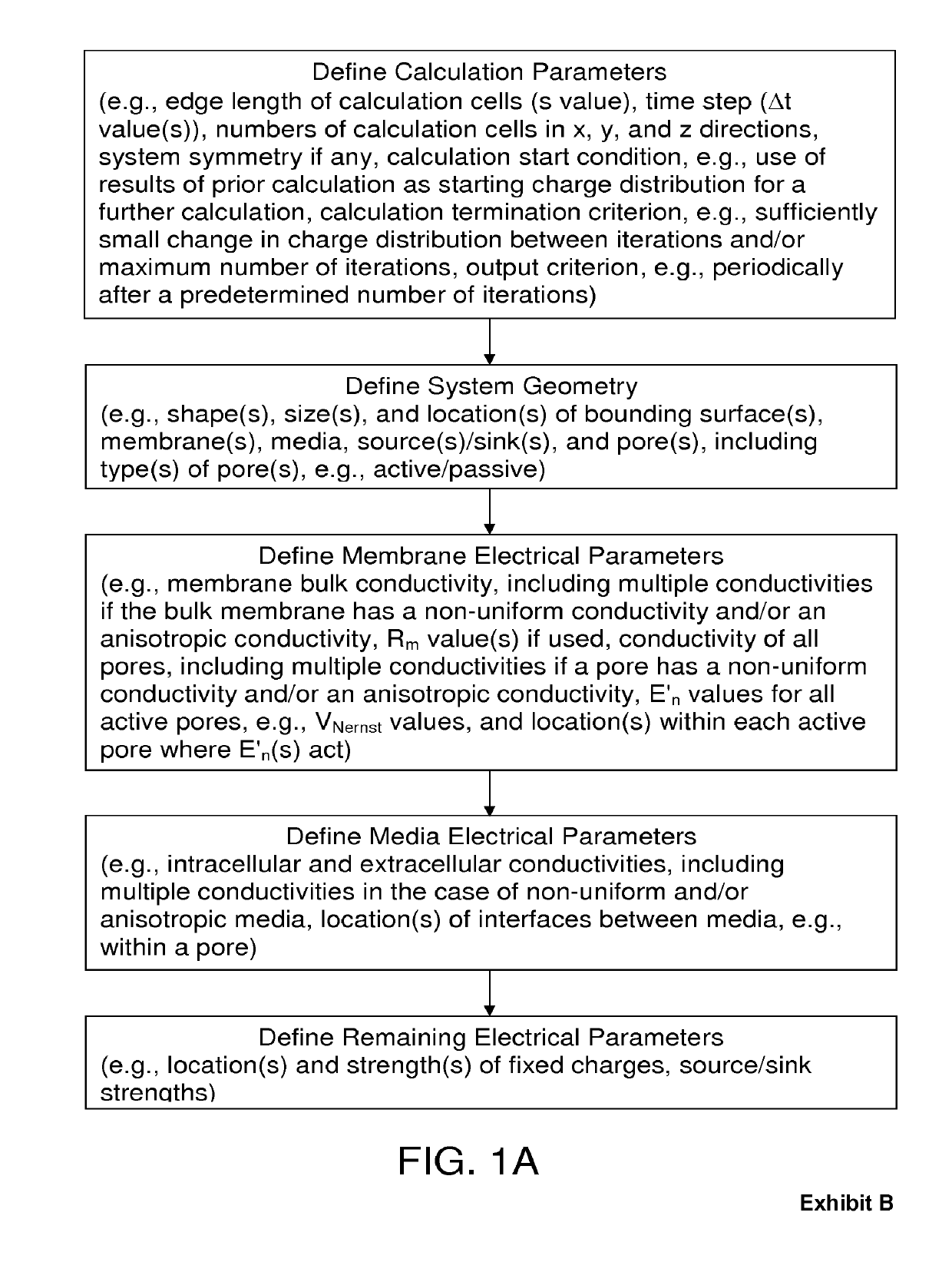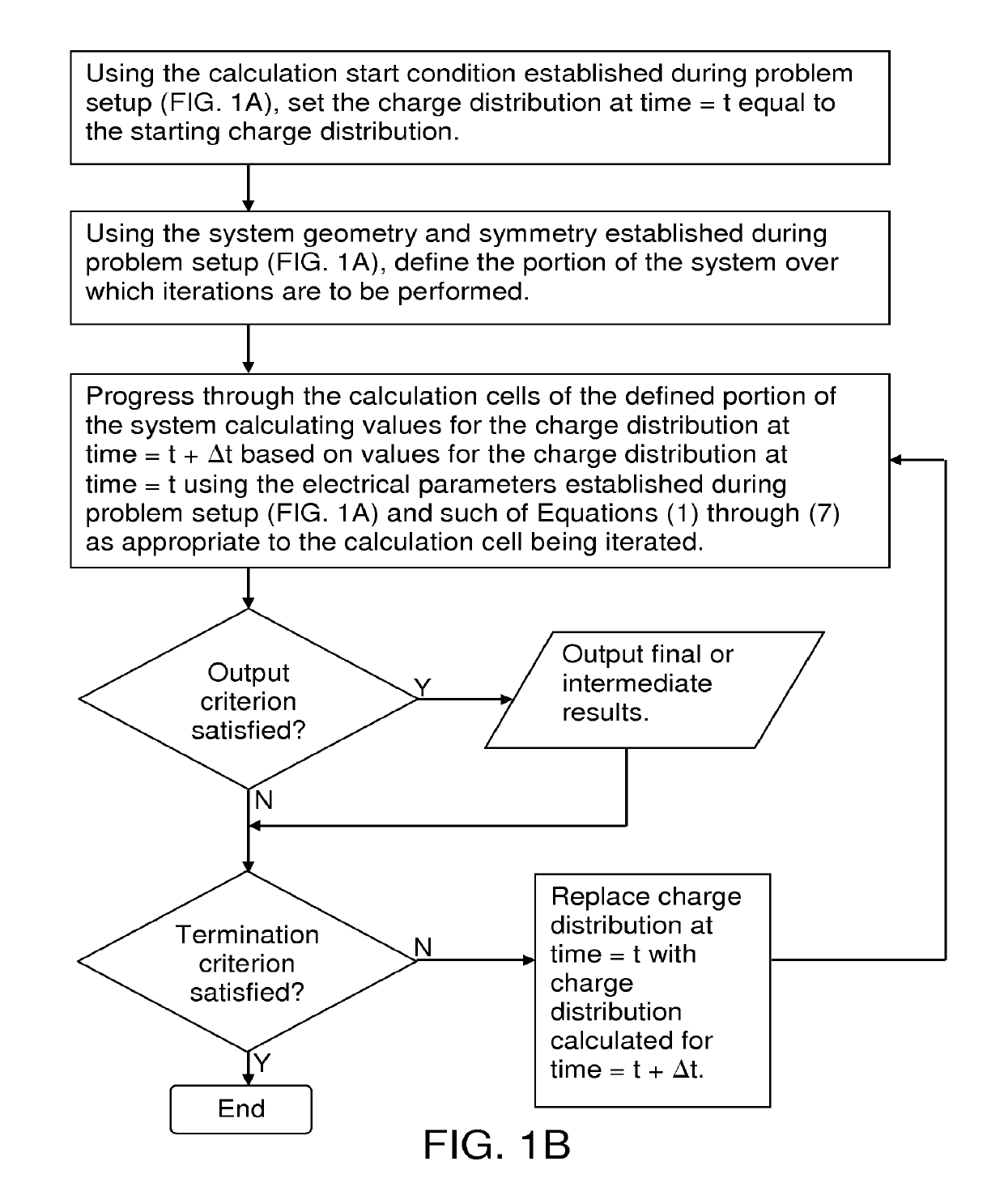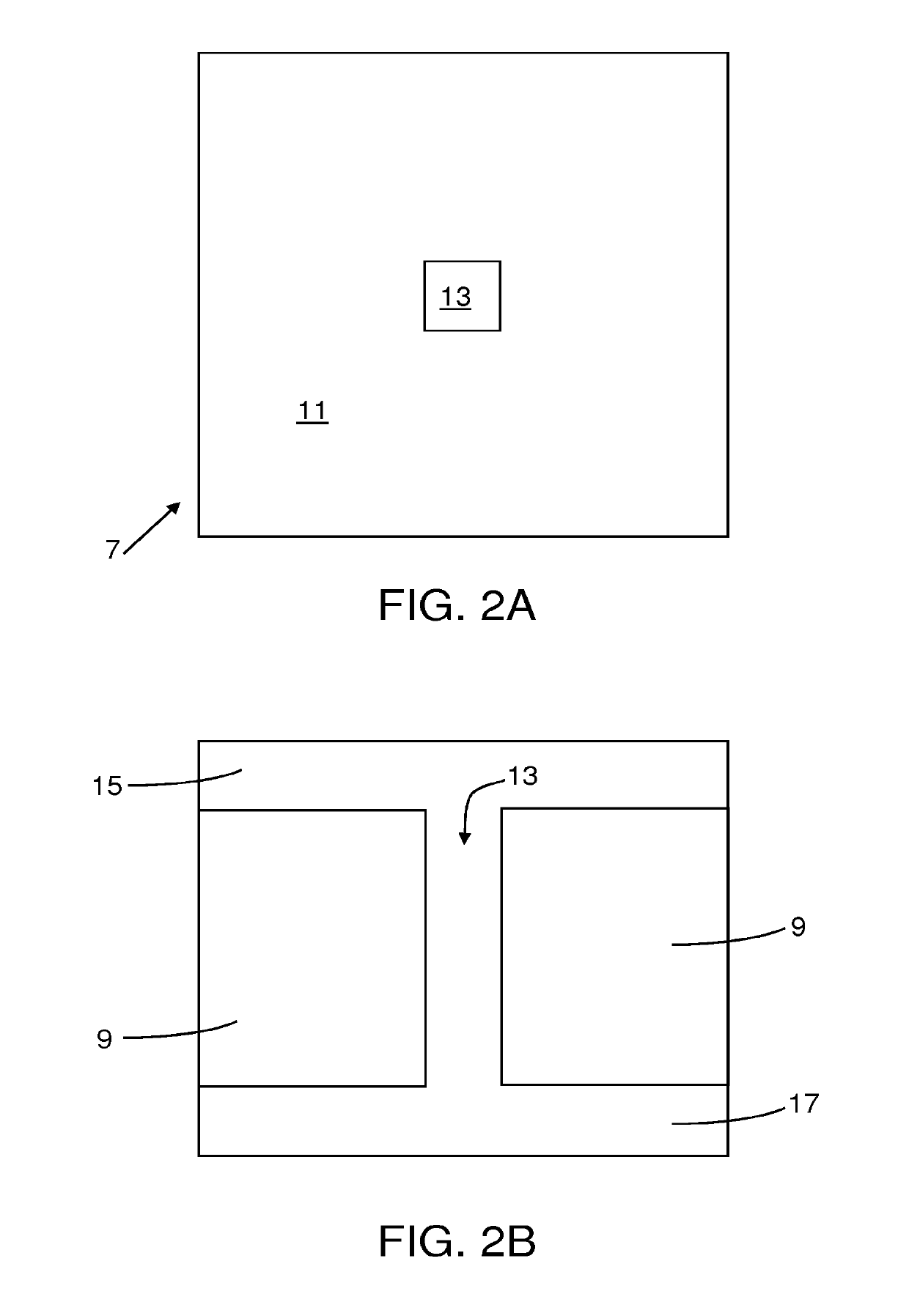Computer-based computational tools for use in electrophysiology
a computer-based, electrophysiological technology, applied in the field of electrophysiology, can solve the problems of many fundamental phenomena that have been poorly understood or not understood at all, and achieve the effect of limiting the scope of invention
- Summary
- Abstract
- Description
- Claims
- Application Information
AI Technical Summary
Benefits of technology
Problems solved by technology
Method used
Image
Examples
example 1
[0146]This example illustrates the use of the computer-based computational tools of the invention to determine charge distributions that cause current to enter a pore in a biological membrane.
[0147]The example demonstrates that: (1) the opening of a biological pore produces an initial rapid redistribution of charge in the vicinity of the pore followed by a slower steady decay of the overall charge distributions on either side of the membrane (i.e., the opening of a pore involves multiple time constants having substantially different values); and (2) as shown in FIG. 5, during the initial rapid phase, charges accumulate at the entrance and exit ends of the pore which have a sign opposite to that of the charges on the surrounding membrane surface (referred to herein as “current-turning charges”).
[0148]Analogies to these current-turning charges can be found in the charge distributions postulated to exist in natural pores. In particular, FIGS. 11.11 and 17.3 of Hille (2001) show renditi...
example 2
[0166]This example illustrates the use of Equations (1)-(2) and (4)-(6) to calculate a charge distribution produced by an active pore.
[0167]FIG. 11 shows the system that was analyzed. A square patch of a planar membrane having an area of 140 Å×140 Å, a thickness of 80 Å, and zero conductivity was placed between two 20 Å layers of a biological fluid having a conductivity of 4 siemens / meter (resistivity=25 ohm-cm). The membrane patch was assumed to include a low resistance path at its outer edge (the “perimeter path”) having a thickness of 4 Å.
[0168]The active pore was a square having 20 Å sides located at the center of the planar membrane. The conductivity of the fluid filling the pore was the same as that of the surrounding media, i.e., 4 siemens / meter. The media were assumed to have different ionic compositions and the pore was assumed to be ion selective so as to generate a Nernst potential of −100 millivolts (intracellular minus extracellular).
[0169]The interface between the extr...
example 3
[0180]This example illustrates the use of Equations (1) and (2) to calculate a charge distribution associated with a difference in conductivity between the media on the intracellular and extracellular sides of a passive pore. It also illustrates the application of an applied current to a pore.
[0181]FIG. 17 shows the system that was analyzed. A square patch of a planar membrane having an area of 140 Å×140 Å, a thickness of 80 Å, and zero conductivity was placed between two 20 Å layers of biological fluid which in the initial analysis had equal conductivities of 0.727 siemens / meter (resistivity=137.5 ohm-cm). The pore was a square having 20 Å sides located at the center of the planar membrane. In the initial analysis, the conductivity of the fluid filling the pore was the same as that of the surrounding media, i.e., 0.727 siemens / meter.
[0182]The overall volume was divided into 35×35×30 calculation cells having an edge length (s value) of 4 Å. A time step (Δt) of 1 picosecond was used ...
PUM
| Property | Measurement | Unit |
|---|---|---|
| time constant | aaaaa | aaaaa |
| RC time constant | aaaaa | aaaaa |
| time constant | aaaaa | aaaaa |
Abstract
Description
Claims
Application Information
 Login to View More
Login to View More - R&D
- Intellectual Property
- Life Sciences
- Materials
- Tech Scout
- Unparalleled Data Quality
- Higher Quality Content
- 60% Fewer Hallucinations
Browse by: Latest US Patents, China's latest patents, Technical Efficacy Thesaurus, Application Domain, Technology Topic, Popular Technical Reports.
© 2025 PatSnap. All rights reserved.Legal|Privacy policy|Modern Slavery Act Transparency Statement|Sitemap|About US| Contact US: help@patsnap.com



